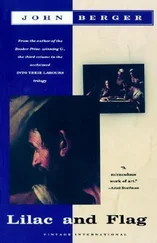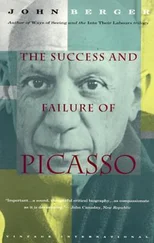She began to stare at the running whitewashed legs, one, unflexing, continually giving place to the second, flexing. The movement was very different from that of a horse’s hind legs as seen from a trap; and the difference disturbed her. Yet her feeling led her to no conclusion. What separated her from the British wives with whom she was obliged to pass most of her time, was her lack of opinions. She had come to hate the sound of talking. She trusted certain feelings in herself precisely because they did not lead to conclusions.
They turned into a narrower but equally straight street which led past the backs of bungalows and some unused sites of land. Trees cast intermittent shade. They came upon a file of African women walking along the grass verge. By their costumes it was clear that they had walked to the city from a Location kraal. (For certain brief occasions women were allowed to come to the city to visit their menfolk employed there.) On their heads they carried immense gourds. The rickshaw slowed down. One of the women shouted something at the Zulu which Beatrice could not understand. Another made a gesture and laughed. None of the women looked at her. Two were old with withered breasts. Another carried a baby.
At the end of the narrow street they joined a busy avenue and reached her destination: the entrance gate to the botanical gardens. She climbed out and asked the rickshaw-boy what was in the gourds the women were carrying. Looking down at her — for she was much shorter — he told her that it was kaffir beer. It was then that everything tilted for the first time. She had to cling to the railings of the botanical gardens. She clung to them, facing them, her head thrust between two bars. The rickshaw-boy stared at her, dumbfounded, until a policeman arrived and started to threaten him.
The second time was in Durban at a dinner party given by the harbour master. She saw the dinner table tilting. She put out her hand to prevent a silver candelabra with candles burning in it from falling over. In making this abrupt movement (which was incomprehensible to those sitting around her) she knocked over a guest’s glass of wine.
Later that night, made tender and menacing by drink, Captain Bierce hissed at her affectionately: A clumsy slave, my dove, must be chastised, I have no choice but to tie you up again. Try to slip out, Beatrice, I must tighten the bindings. Speak to me, Beatrice. Declare your allegiance.…
As her delusion became more and more frequent, the physical sensation of everything being tilted gave way to a conviction that it was being tilted. She suddenly knew it instead of feeling it.
She is aware that there is another way of seeing her and all that surrounds her, which can only be defined as the way she can never see. She is being seen in that way now. Her mouth goes dry. Her corsets constrain her more tightly. Everything tilts. She sees everything clearly and normally. She can discern no tilt. But she is convinced, she is utterly certain that everything has been tilted.
Even when the delusion had passed, the idea of the sub-continent being tilted did not strike her as implausible; on the contrary it seemed to correspond with the rest of her daily experience and to make that experience more credible.
Gradually the anguish accompanying the delusion lessened. She consulted nobody. She ceased to be worried by its abnormality. She accepted it. She accepted it as the consequence of living first in Pietermaritzburg, then in Durban, and later in Capetown. She no longer wondered whether she was going mad; instead she awaited her chance to escape.
Beatrice’s disturbance was probably partly due to her discovery of what her husband was like out of his uniform. All that he demanded was that she should allow him to tie her up and gently maltreat her. The mere sight of her tied up was usually sufficient to bring him to a sexual climax; she suffered not from his violence but from her own shame and disappointment. The unfamiliar climate of Natal and Cape Colony may have further exacerbated her nervous condition. But there was another factor.
THE GREAT AMAXOSA DELUSION
On 23 December 1847, the British Governor of Cape Colony, Sir Harry Smith, summoned together the chiefs of the Amaxosa tribes on the Eastern Frontier. He told them that their territory — the most fertile in South Africa — was to be annexed and made a crown dependency: British Kaffraria. After a while it became clear that the Gaika tribe and their chief Sandila were determined to offer the most stubborn resistance. Sir Harry Smith re-summoned the chiefs. Sandila refused to come. Whereupon Sir Harry deposed him of his chiefship, and in his place, as chief of the Gaikas, appointed an English magistrate called Mr Brownlee. Convinced that they had now dealt with the matter masterfully, the two Englishmen ordered the arrest of Sandila. On 24 December 1850 the force sent out to arrest him was ambushed and the Gaika tribe rose in revolt. White settlers in the military villages along the frontier were attacked and killed whilst celebrating Christmas. Thus began the Fourth Kaffir War: the penultimate stage in the Amaxosas’ long defence of their independence, which had continued for sixty years.
By 1853 the British, with their prodigious military advantages (the war cost the Colonial Office nearly a million pounds), were able to impose a military defeat on the tribes. In 1856 there followed what the British were later to call ‘The Great Amaxosa Delusion’. This ‘delusion’ constituted the ultimate stage of the Amaxosa nation’s defence of its independence.
A girl named Nongkwase told her father that when going to draw water from a stream she had met strangers of commanding aspect. The father went to see them. They told him that they were spirits of the dead who had come to help their people drive the white men into the sea. The father reported to Sarili, an Amaxosa chief, who announced that the people must do what the spirits instructed. The spirits instructed the people to kill all their cattle and to destroy every grain of corn they possessed. Their cattle had become thin and their crops poor as a result of the land already stolen from them by the white man. When every head of cattle was killed and every seed of corn destroyed, myriads of fat beautiful cattle would issue from the earth, great fields of heavy ripe corn would instantly appear, trouble and sickness would vanish, everybody would be young and beautiful, and the white man, on that day, would perish utterly.
The people obeyed. Cattle were central to their culture. In the villages heads of cattle were the measuring units of wealth. When a daughter was married, her father, if rich enough, gave her a cow, an ubulungu—‘a doer of good’: this cow must never be killed and a hair from its tail must always be tied round the neck of each of the daughter’s children at birth. Nevertheless the people obeyed. They slaughtered their cattle and their sacred cows and they burnt their grain.
They built large new kraals for the new fat cattle that would come. They prepared skin sacks to hold the milk that was soon to be more plentiful than water. They held themselves in patience and waited their vengeance.
The appointed day of the prophecy arrived. The sun rose and sank with the hopes of hundreds of thousands. By nightfall nothing had changed.
An estimated fifty thousand died of starvation. Many thousands more left their land to search for work in Cape Colony. Those who remained did so as a propertyless labour force. (A little later many were to work as wage slaves in the diamond and gold mines further north.) On the rich, now depopulated, land of the Amaxosa, European farmers settled and prospered.

Who is that? asked the boy.
Читать дальше













